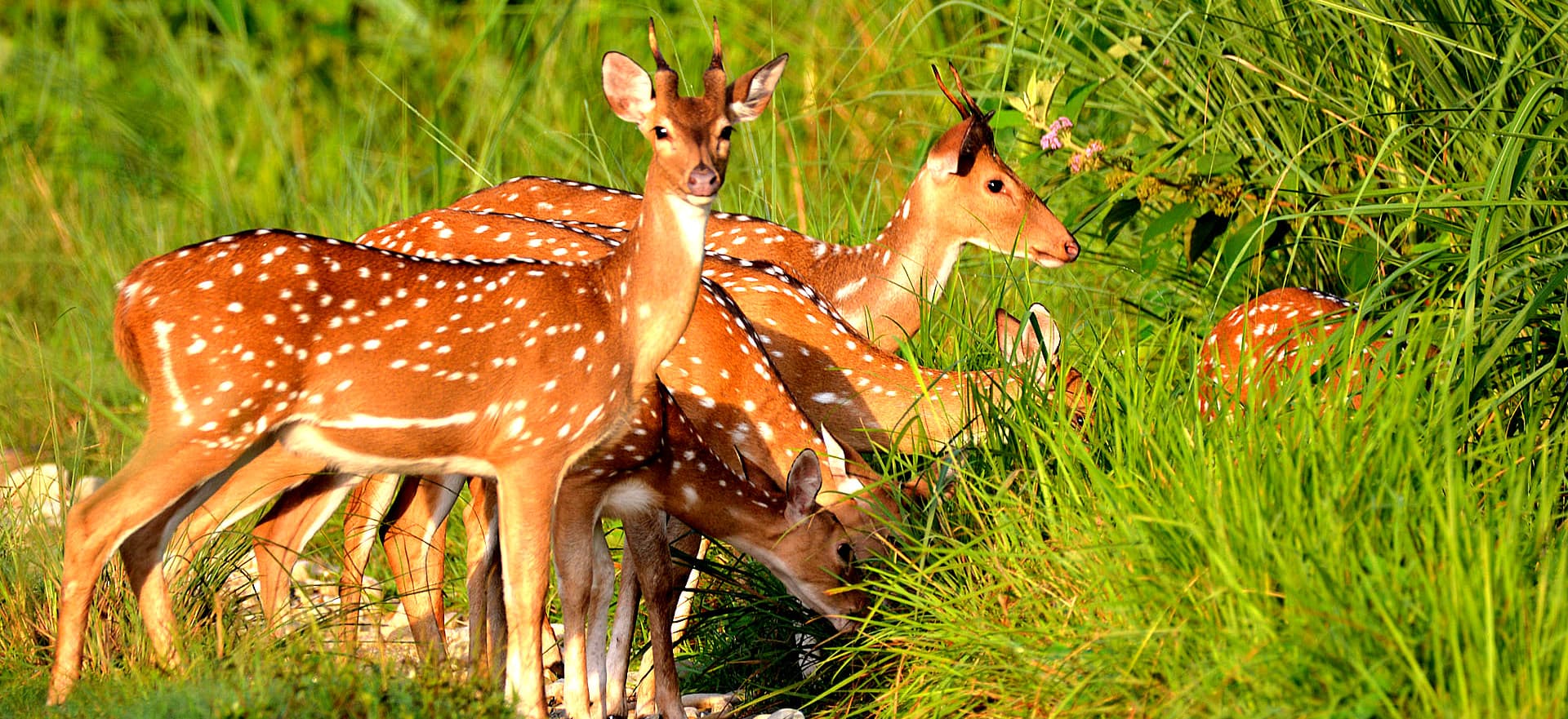Nepal offers a captivating blend of adventure, culture, and serenity that makes it a top destination for travelers from all corners of the world. From the snow-capped peaks of the Himalayas to the rich tapestries of its cultural festivals, this country provides a unique journey into nature and tradition. Whether scaling the heights near Everest or exploring ancient temples in the Kathmandu Valley, every moment in Nepal is an opportunity to create lasting memories.
For those drawn to natural beauty and thrilling landscapes, Nepal’s trekking routes offer unmatched vistas and challenges, while its bustling markets and serene monasteries offer a quieter but equally enriching experience. The diversity of activities available ensures that every traveler’s bucket list can be filled with experiences that resonate with both the spirit of adventure and the need for peaceful reflection. With each step, Nepal reveals its complexity and invites visitors to delve deeper into its vibrant culture and landscapes.
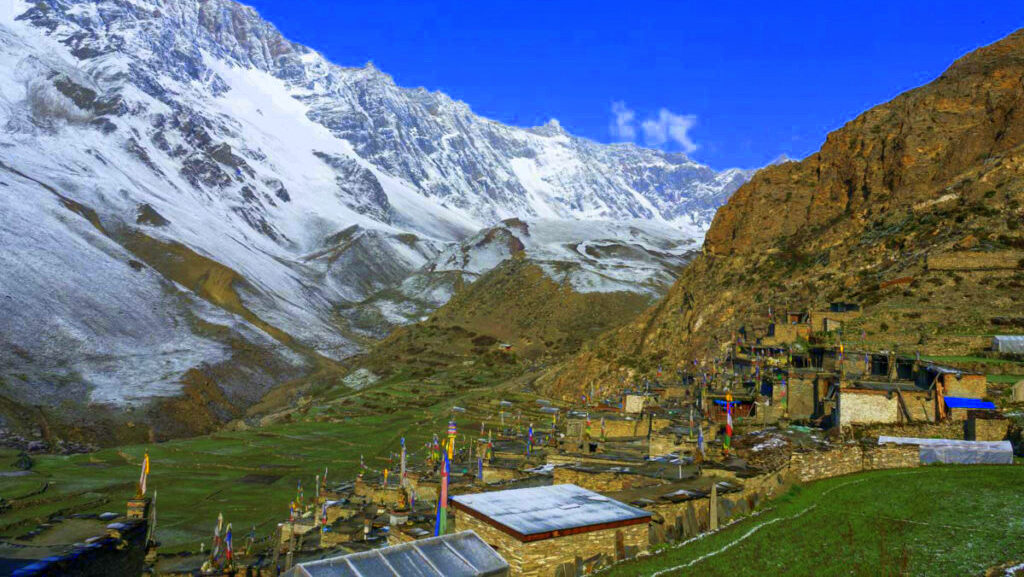
At Luxury Holidays Nepal Pvt. Ltd., we offer the ultimate in travel experiences across this stunning country. From high-altitude adventures like the Everest Base Camp Trek to cultural immersions in the heart of Kathmandu Valley, our curated luxury tours ensure you explore the best of Nepal in style and comfort. Whether you're interested in adventure sports, serene spiritual journeys, or exploring wildlife, our expertly crafted itineraries cater to every aspect of the ultimate Nepal bucket list. Join us to discover why we are the top choice for travelers seeking unique and luxurious experiences in Nepal.
Everest Base Camp Trek
The Everest Base Camp Trek is one of the most iconic and exhilarating treks in the world, attracting adventurers and nature enthusiasts to the heart of the Nepalese Himalayas. This trek not only offers the opportunity to witness the breathtaking majesty of Mount Everest up close but also provides a deep cultural immersion into the lives of the Sherpa people, the renowned mountain guides of Everest.

Key Details of the Everest Base Camp Trek:
- Duration: Typically, the trek takes about 12 to 14 days, depending on your itinerary and pace.
- Difficulty Level: Challenging, due to its high altitudes and the physical demands of the trek. Acclimatization days are included to help trekkers adjust to the high elevation.
- Starting Point: The trek usually begins with a flight from Kathmandu to Lukla, known as one of the most thrilling airports in the world due to its short runway and dramatic location.
- Altitude: The trek reaches its highest point at Kala Patthar, at an elevation of 5,545 meters (18,192 feet), offering the best view of Everest's summit.
Highlights of the Trek:
- Namche Bazaar: Often referred to as the gateway to the high Himalayas, this bustling market town offers trekkers a chance to acclimatize and purchase last-minute trekking supplies.
- Tengboche Monastery: Located at 3,867 meters, this is one of the largest and most active monasteries in the region, with panoramic views of the Himalayan peaks, including Everest, Lhotse, and Ama Dablam.
- Impeccable Views: From various points along the trek, enjoy unparalleled views of some of the world's highest peaks.
- Sherpa Culture and Hospitality: Experience the warm hospitality and rich culture of the Sherpa community, visiting local homes and monasteries.
What to Expect:
- Weather: Conditions can be extreme, with cold temperatures and potential for sudden snowfall. The best times to embark on this trek are pre-monsoon (March to May) and post-monsoon (late September to November) when the weather is generally clearer.
- Physical Preparation: Due to the demanding nature of the trek, physical fitness and some prior trekking experience are highly recommended.
- Accommodation and Meals: Trekkers usually stay in teahouses along the route, which provide basic accommodation and meals. This allows for a lighter pack and a more comfortable trekking experience.
Why Trek to Everest Base Camp?
The Everest Base Camp Trek is more than just a hiking adventure; it’s a journey through the heart of the Himalayas, filled with awe-inspiring landscapes and life-enriching cultural experiences. This trek not only challenges your physical limits but also expands your horizons, offering deep insights into the natural and cultural heritage of Nepal. Whether for the personal achievement of reaching the base of the highest mountain in the world or the allure of adventure in the stunning Himalayas, this trek remains a top bucket-list item for travelers around the globe.
Kathmandu Valley Exploration
Exploring the Kathmandu Valley is an enriching journey through Nepal's cultural heart, offering a deep dive into ancient history, architecture, and traditions. The valley is a treasure trove of historic sites, religious temples, and vibrant street life, encapsulated within the three major cities: Kathmandu, Patan, and Bhaktapur.
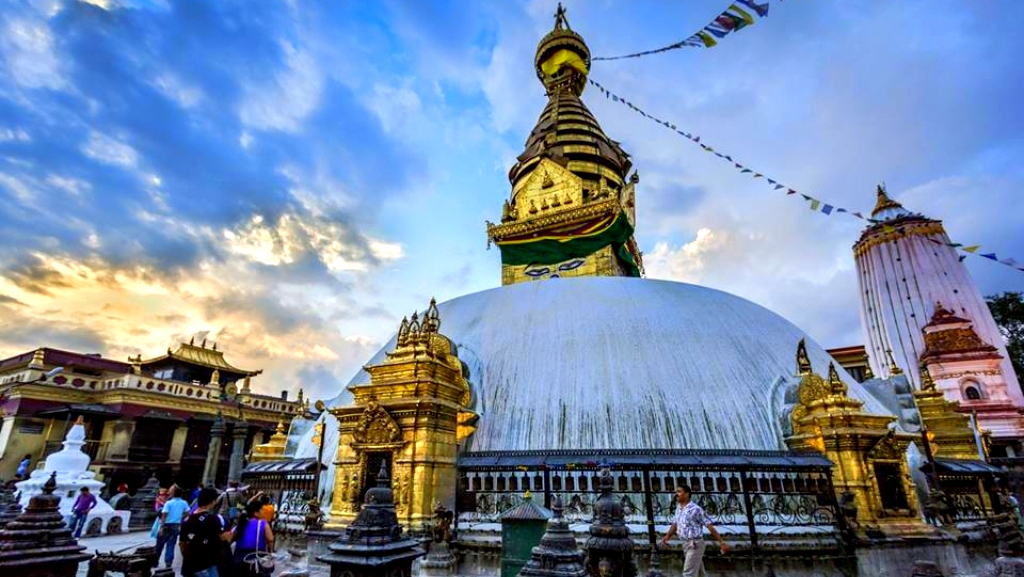
Key Features of Kathmandu Valley Exploration:
- Historical Significance: Kathmandu Valley is not only the political and cultural hub of Nepal but also a place of profound historical importance, boasting several UNESCO World Heritage Sites.
- Diverse Cultural Influences: The valley has been influenced by various cultures over the centuries, including Hinduism and Buddhism, which are reflected in its architecture and community practices.
Major Attractions in the Kathmandu Valley:
-
Kathmandu Durbar Square: Located in the heart of the old city, this historic square was once the royal Nepalese residence and is surrounded by courtyards and temples. It's known for its intricate wood carvings and stunning architecture.
-
Swayambhunath Stupa (Monkey Temple): This ancient religious complex sits atop a hill in the Kathmandu Valley. It's one of the most sacred Buddhist pilgrimage sites in Nepal, famous for its panoramic views of the city and the monkeys that inhabit the area.
-
Patan Durbar Square: Found in the city of Patan, this square is renowned for its artisan community and fine crafts, including metalworks and stone carvings. The architecture here displays the skills of Newar artists and craftsmen over several centuries.
-
Bhaktapur Durbar Square: This preserved square offers a glimpse into the kingdom’s glorious past with its magnificent statues, temples, and shikhara-style architecture. Bhaktapur is less crowded and provides a more relaxed atmosphere compared to Kathmandu and Patan.
-
Pashupatinath Temple: This is one of the most important Hindu temples of Shiva in the world, located on the banks of the Bagmati River. It is a site of both daily religious rites and famous annual festivals like Maha Shivaratri.
-
Boudhanath Stupa: One of the largest stupas in the world, it serves as an important place of pilgrimage and meditation for Tibetan Buddhists, local Nepalis, and tourists alike.
What to Expect During Your Visit:
-
Cultural Festivals: The valley is lively and festive throughout the year with various traditional celebrations and events. Participating in these festivals can provide deeper insight into the local culture and traditions.
-
Art and Craft: Explore local handicrafts, such as pottery and traditional Nepali paper (Lokta paper), especially in Bhaktapur, where you can witness artisans at work.
-
Culinary Delights: Nepali cuisine is a must-try, with a variety of dishes that reflect the ethnic diversity of the region. Don’t miss out on local delicacies like momos (dumplings), dal bhat (rice and lentils), and Newari cuisine.
-
Accommodations: The valley offers a range of accommodations, from traditional guesthouses in old city centers to luxurious hotels in more modern areas.
Why Explore Kathmandu Valley?
A visit to the Kathmandu Valley is essential for understanding Nepal's rich cultural and historical landscape. Each city in the valley offers a unique perspective on the country's architectural beauty and spiritual depth. Whether you are wandering through the narrow alleyways of the old towns, visiting the revered temples, or enjoying the local cuisine, Kathmandu Valley provides a vibrant and unforgettable cultural experience.
Adventure Sports in Nepal: Thrilling Experiences in the Himalayan Backdrop
Nepal, with its rugged landscapes and dramatic elevation changes, offers a prime setting for a variety of adventure sports. Whether you're seeking adrenaline-fueled activities in the air, on water, or across mountainous terrain, Nepal’s diverse offerings cater to thrill-seekers from around the globe.
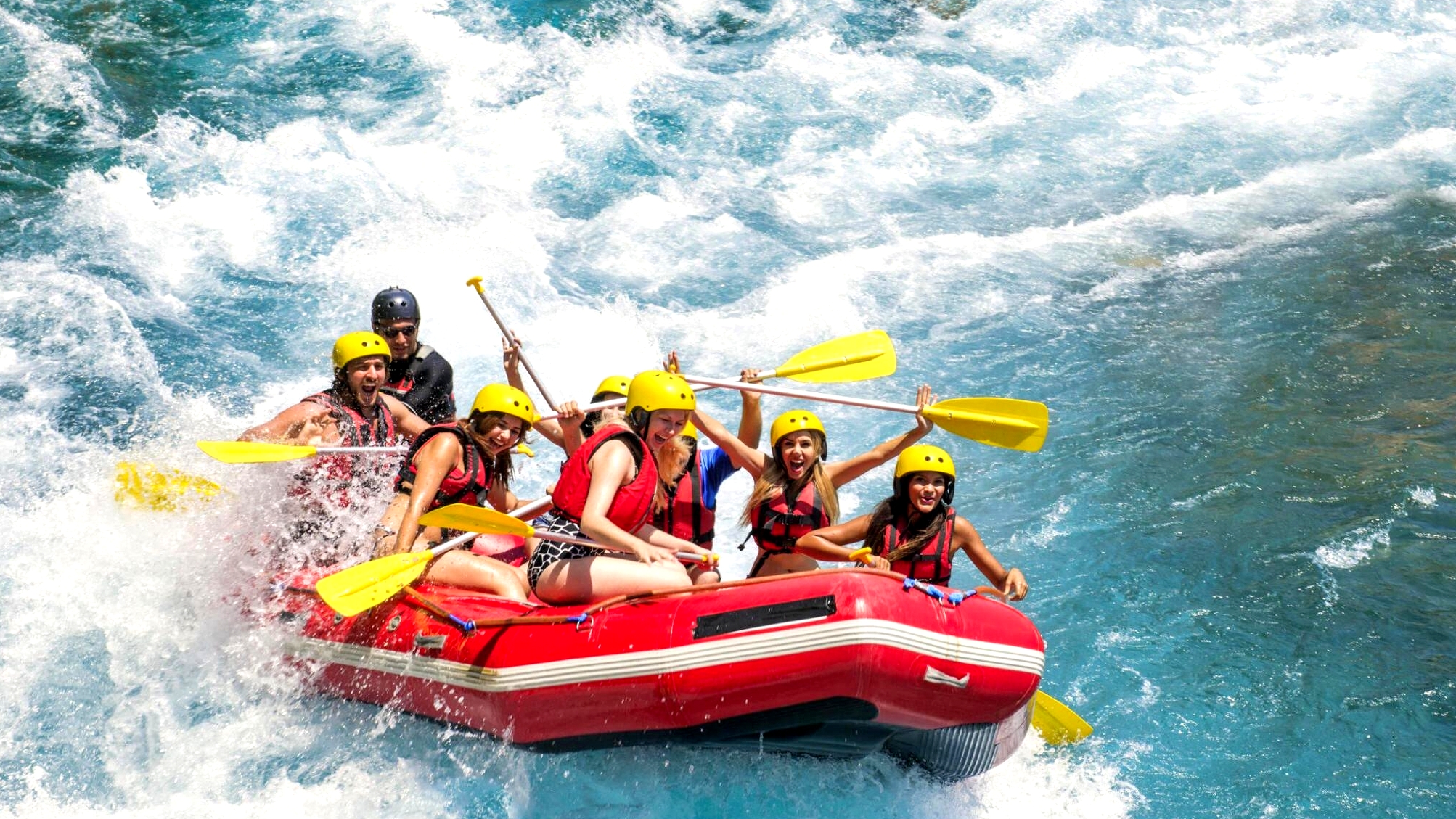
Key Adventure Sports in Nepal:
-
Paragliding: Pokhara, with its stunning views of the Annapurna range and the serene Phewa Lake, is the top spot for paragliding in Nepal. Glide through the air and enjoy a bird's-eye view of the breathtaking landscapes below.
-
White-water Rafting: Nepal is home to some of the best white-water rafting in the world, thanks to its fast-flowing rivers, such as the Trishuli, Bhote Koshi, and Sun Koshi. These rivers offer a range of rapids that cater to both beginners and experienced rafters, surrounded by impressive scenery.
-
Bungee Jumping: Experience the thrill of bungee jumping into a deep gorge over the Bhote Koshi River, one of the world’s highest bungee jumps. This activity is perfect for those looking to test their limits and experience a rush like no other.
-
Zip-lining: Fly over dense forests and beautiful terrains at incredible speeds on zip-lines in Pokhara and Dhulikhel. These are among the longest and most thrilling zip-lines in Asia.
-
Mountain Biking: Explore Nepal's diverse landscapes on a mountain bike. Trails range from the urban outskirts of Kathmandu to the remote areas around the Annapurna Circuit. This sport offers a unique way to see the countryside, from rice fields to high-altitude landscapes.
-
Rock Climbing: With numerous natural and man-made climbing sites, Nepal is a great destination for rock climbers. The Nagarjun Forest Reserve and the cliffs at Hattiban are popular spots near Kathmandu for beginners and advanced climbers alike.
-
Kayaking and Canoeing: For water sports enthusiasts, kayaking and canoeing are excellent ways to explore Nepal’s rivers. The Seti River and the Upper Sun Koshi are perfect for a scenic paddle, offering a mix of peaceful floats and challenging rapids.
-
Skydiving: For the ultimate thrill, skydive over the spectacular landscapes of Everest or the Annapurna region. This once-in-a-lifetime experience offers unmatched views of the Himalayas.
What to Expect:
-
Professional Guidance: Nepal’s adventure sports operators are well-equipped with trained professionals to guide you through each activity, ensuring safety without compromising on the thrill.
-
Equipment and Safety: High standards of safety gear and equipment are maintained to provide a secure environment for all adventure sports activities.
-
Best Times for Adventure Sports: The best months for engaging in most adventure sports in Nepal are from September to November and from March to May, when the weather is clear and visibility is at its best.
Why Choose Nepal for Adventure Sports?
Adventure sports in Nepal are not just about the adrenaline rush; they also connect you with nature and the stunning beauty of the Himalayas. The country’s natural geography offers unique opportunities that are hard to find elsewhere in the world. From soaring above majestic peaks to rushing down vibrant rivers, adventure sports in Nepal provide an unforgettable experience, merging excitement with the unparalleled beauty of the natural landscape.
Cultural Festivals in Nepal: A Vibrant Tapestry of Traditions
Nepal is renowned for its rich cultural diversity and vibrant festivals, which play a significant role in the social and spiritual life of its people. Celebrated with enthusiasm across the country, these festivals offer a glimpse into the traditions, religious beliefs, and community spirit of the Nepalese people. Here’s a guide to some of the most significant cultural festivals in Nepal.

Major Cultural Festivals:
-
Dashain: As the longest and the most auspicious festival in the Nepalese annual calendar, Dashain celebrates the victory of the gods over the demons. One of the highlights is the flying of kites, symbolizing the call to the gods to bring rain. This festival also involves family reunions, the exchange of gifts and blessings, and elaborate pujas.
-
Tihar (Festival of Lights): Often compared to Diwali in India, Tihar is celebrated over five days and honors animals such as crows, dogs, and cows for their important roles in Hindu mythology. The festival culminates in Bhai Tika, where sisters apply tika to their brothers' foreheads to ensure long life and thank them for their protection.
-
Holi: Known as the festival of colors, Holi marks the arrival of spring and the victory of good over evil. People celebrate by smearing colored powder on each other and throwing water balloons, making for a lively and colorful atmosphere.
-
Indra Jatra: This eight-day festival is celebrated in Kathmandu in honor of Indra, the king of heaven and the god of rain. Highlights include the Kumari Jatra, where the living goddess Kumari is paraded through the streets in a chariot, and traditional masked dances that depict various Hindu myths.
-
Teej: Exclusively celebrated by women, Teej is a festival marked by fasting, folk songs, and dances. Women dress in red saris and adorn themselves with jewelry and mehndi (henna) to pray for marital bliss and the well-being of their husbands.
-
Maghe Sankranti: This festival marks the end of the winter solstice and involves feasting on foods like sesame seed laddus and yam or sweet potatoes. It is considered an important harvest festival and a time for family gatherings.
-
Buddha Jayanti: Celebrating the birth, enlightenment, and death of Buddha, this festival is especially significant in Lumbini, the Buddha's birthplace. Devotees visit stupas and monasteries to light butter lamps and offer prayers.
What to Expect:
- Vibrant Celebrations: Each festival is marked by distinctive customs such as singing, dancing, and feasting, offering a feast for the senses.
- Community Participation: These festivals are community-centered, with entire neighborhoods or cities coming together to celebrate.
- Spiritual Experiences: For many, these festivals are deeply spiritual occasions, filled with rituals and prayers that reflect the devout nature of the Nepalese people.
Why Experience Nepalese Festivals?
Participating in Nepalese festivals provides a profound insight into the cultural and spiritual life of Nepal. These festivals are not just times for merrymaking but are also profound communal rituals that reinforce social bonds and cultural identity among the Nepalese people. Whether you’re witnessing the grandeur of Dashain or the colorful chaos of Holi, experiencing these festivals firsthand is a way to connect with the heart and soul of Nepal.
Wildlife Safaris in Chitwan National Park: A Journey into Nepal's Natural Heritage
Chitwan National Park, established in 1973 and Nepal's first national park, is a UNESCO World Heritage site renowned for its biodiversity and vibrant wildlife. Located in the subtropical Inner Terai lowlands of south-central Nepal, the park covers an area of 952 square kilometers and offers some of the best wildlife viewing opportunities in Asia.
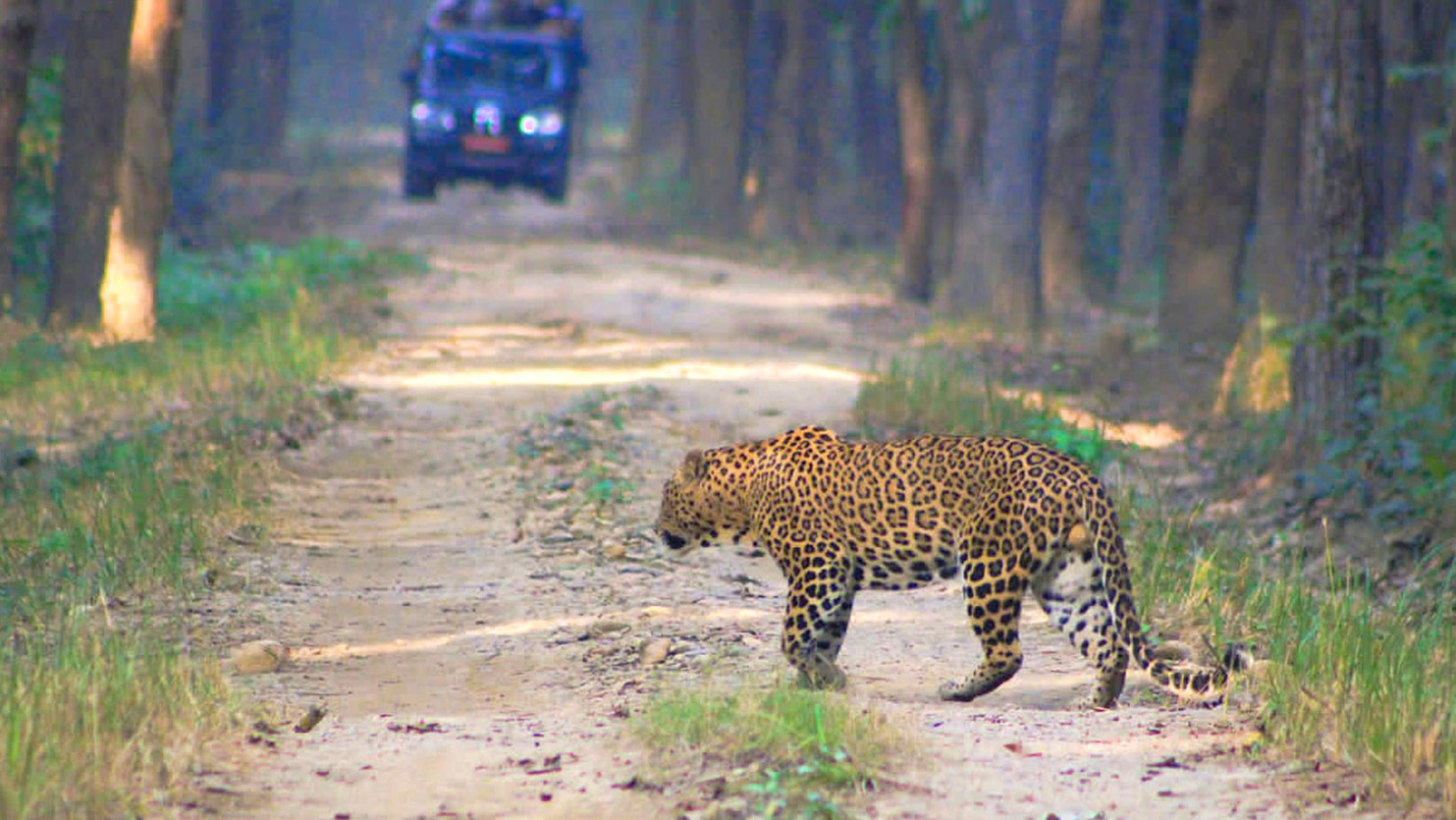
Key Features of Chitwan National Park:
-
Diverse Ecosystems: Chitwan boasts a variety of ecosystems, including grasslands, subtropical forests, and riverine forests, making it a sanctuary for wildlife.
-
Rich Biodiversity: The park is home to over 700 species of wildlife. It's particularly famous for its protection of the one-horned rhinoceros, Royal Bengal tiger, and Asian elephant.
Highlights of Wildlife Safaris in Chitwan:
-
Elephant-Back Safaris: Riding on the back of an elephant offers a unique vantage point for spotting wildlife, such as deer, rhinoceros, and occasionally a tiger, in their natural habitat.
-
Jeep Safaris: For those who prefer not to ride elephants, jeep safaris provide a comfortable and effective way to explore the vast expanses of the park, increasing your chances of encountering diverse wildlife.
-
Canoe Rides: Glide along the Rapti or Narayani rivers in a traditional dugout canoe. This peaceful and silent mode of transport is excellent for spotting crocodiles, water birds, and even the rare Gangetic dolphin.
-
Bird Watching: Chitwan is a haven for bird enthusiasts with over 500 species of birds, including several rare and endangered varieties like the Bengal florican and the giant hornbill. Early morning or late afternoon walks are ideal for bird watching.
-
Nature Walks: Accompanied by experienced naturalists, take a walk through the dense forests and open grasslands to learn about the park's flora and fauna up close.
-
Cultural Shows: In the evenings, enjoy cultural performances by local Tharu people, which include dances and songs that reflect their rich cultural heritage.
What to Expect:
-
Best Time to Visit: The best time to visit Chitwan National Park is from October to March when the weather is cooler and visibility is better. The park remains open year-round, but the summer monsoon can restrict movement within the park due to flooding.
-
Accommodations: There is a range of accommodations available from basic lodges to luxurious resorts. Many of these are designed to blend in with the natural environment and offer packages that include safari activities.
-
Safety and Regulations: The park has strict regulations to ensure the safety of visitors and the protection of wildlife. Guides and naturalists are trained to provide a safe and informative experience.
Why Visit Chitwan National Park?
A wildlife safari in Chitwan National Park offers more than just the thrill of encountering wild animals in their natural habitat. It is an educational experience that highlights the importance of conservation while providing an immersive insight into Nepal’s wildlife. The diverse activities available ensure that all visitors, regardless of age or interest, will have an enriching and memorable experience. Whether you’re photographing birds, cruising down a river, or watching a sunset over the forest, Chitwan presents an unparalleled opportunity to connect with nature.
Spiritual Sites in Nepal: A Journey Through Sacred Spaces
Nepal, with its deep spiritual heritage, offers a plethora of sacred sites that attract pilgrims and seekers from around the world. The country's rich tapestry of Hinduism and Buddhism is reflected in its numerous temples, monasteries, and spiritual landmarks nestled among some of the world’s most dramatic landscapes.
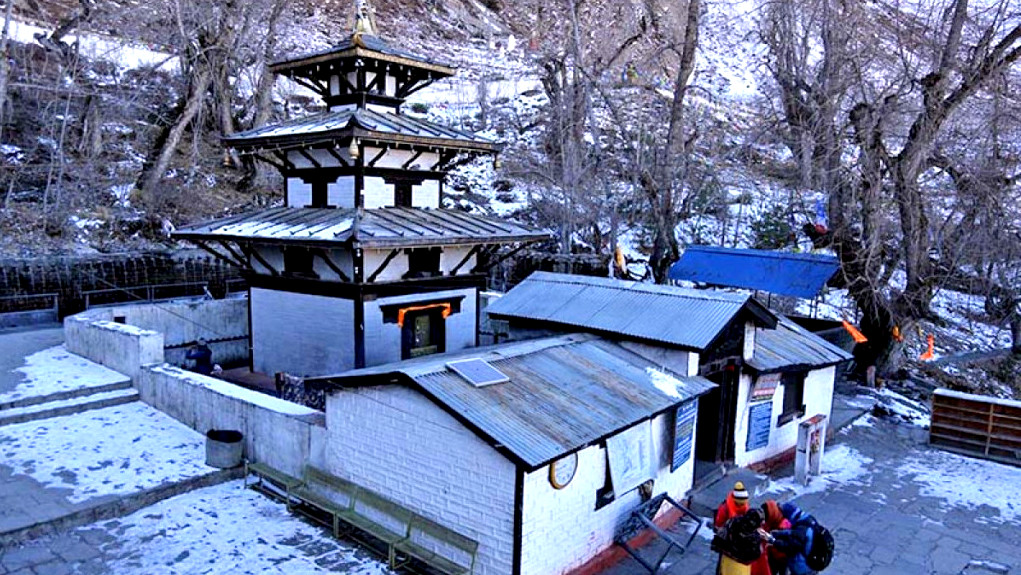
Key Spiritual Sites in Nepal:
-
Lumbini: Recognized as the birthplace of Lord Buddha, Lumbini is one of the holiest places in Buddhism. This UNESCO World Heritage site houses the ancient Mayadevi Temple, which marks the exact spot of Buddha's birth, and is surrounded by monasteries and meditation centers built by Buddhist communities from around the world.
-
Pashupatinath Temple: Situated on the banks of the Bagmati River in Kathmandu, this is one of the most significant Hindu temples of Shiva in the world. Pashupatinath is a sprawling temple complex with a history that stretches back over 1,400 years. The site is especially revered during the annual Maha Shivaratri festival, attracting thousands of devotees.
-
Swayambhunath Stupa (Monkey Temple): Located atop a hill in Kathmandu, this ancient stupa is one of the most sacred Buddhist sites in Nepal. Known for its iconic "eyes of Buddha" that look out in the four cardinal directions, the complex offers panoramic views of the capital city and serves as a key site for Buddhist pilgrims.
-
Boudhanath Stupa: This is one of the largest stupas in the world and a focal point of Tibetan Buddhism in Nepal. The stupa's massive mandala makes it one of the largest spherical stupas in Nepal and a hub for Tibetan culture, prayer, and meditation.
-
Muktinath Temple: Located in the Mustang district, this temple is sacred to both Hindus and Buddhists. It sits at an altitude of 3,710 meters at the foot of the Thorong La mountain pass. Muktinath is a symbol of the religious symbiosis between both faiths and is particularly revered by Vaishnavites as one of the 108 Divya Desams.
-
Manakamana Temple: Accessed by a cable car that offers stunning views of the Trisuli River and the surrounding hills, the Manakamana Temple is dedicated to the Hindu Goddess Bhagwati. Pilgrims visit this temple with the belief that the goddess fulfills the wishes of all who make the pilgrimage.
What to Expect:
-
Spiritual Atmosphere: These sites are not just tourist attractions but active places of worship. Visitors can expect to see daily rituals, special ceremonies, and pilgrims engaging in devotional activities.
-
Cultural Insights: Visiting these spiritual sites provides a deeper understanding of the cultural and religious practices in Nepal. It’s an opportunity to witness ancient rituals and meet devotees and monks.
-
Serene Landscapes: Many of these sites are located in areas of natural beauty, providing a serene backdrop that enhances the spiritual experience.
Why Explore Nepal’s Spiritual Sites?
Exploring Nepal’s spiritual sites is an enriching experience that offers more than just sightseeing. It provides insight into the spiritual practices that have shaped the region's culture and history. Whether you are seeking a deeper understanding of Eastern religions, a place for personal reflection, or simply the peaceful surroundings of sacred spaces, Nepal’s spiritual sites offer a profound and moving experience.
Scenic Mountain Flights in Nepal: An Aerial Adventure Above the Himalayas
Nepal, home to some of the highest peaks in the world, offers unique opportunities to witness these majestic mountains from the sky. Scenic mountain flights are a popular way for visitors to experience the grandeur of the Himalayas, including the mighty Mount Everest, without the need for strenuous trekking.
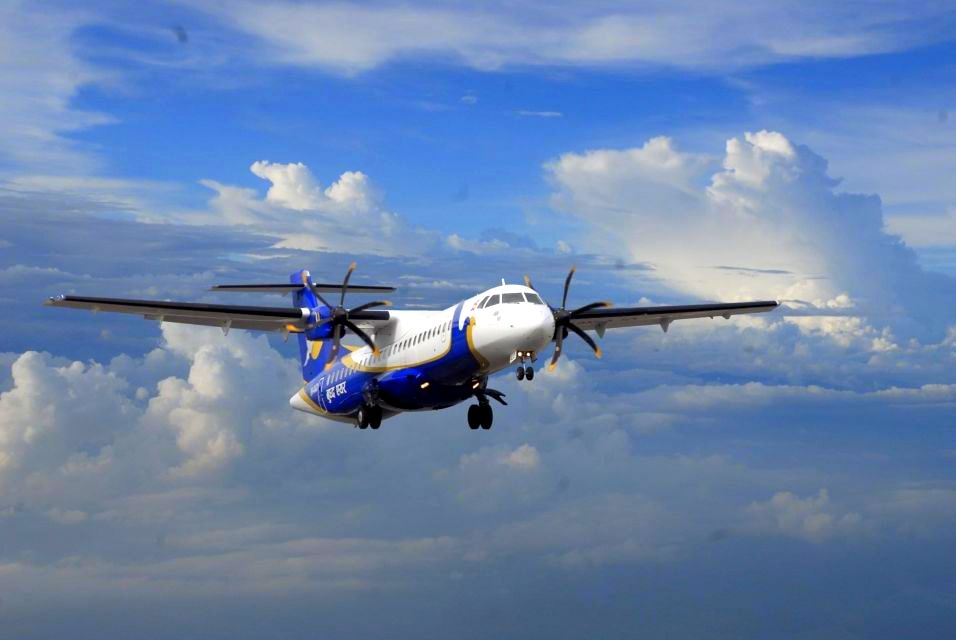
Key Highlights of Scenic Mountain Flights in Nepal:
-
Everest Scenic Flight: This is the most famous scenic flight, offering awe-inspiring close-up views of Mount Everest and its surrounding peaks. Departing from Kathmandu, these flights typically last about an hour and provide passengers with individual windows for an unobstructed view of the world’s highest mountain.
-
Annapurna Scenic Flight: For those based in Pokhara, a flight around the Annapurna range offers a stunning aerial perspective of this massive mountain and its neighbors. This flight not only showcases the peaks but also provides views of the beautiful Pokhara Valley and the Phewa Lake below.
-
Langtang Scenic Flight: A shorter and often more budget-friendly option, this flight takes you over the Langtang National Park, offering a glimpse of glaciers, pristine lakes, and rugged terrain. This region is less traveled compared to Everest and Annapurna, providing a unique and serene experience.
What to Expect:
-
Duration and Departure: Most scenic flights are brief, typically lasting between 50 minutes to an hour. They usually depart early in the morning when the weather is clearest and the visibility is best.
-
Aircraft and Seating: Flights are conducted in small fixed-wing aircraft. Each passenger is guaranteed a window seat to ensure that everyone has an equal opportunity to view the spectacular scenery.
-
Pilot Commentary: During the flight, the pilot provides commentary on the visible peaks and important landmarks. Some flights even allow passengers to visit the cockpit for an even broader view.
-
Safety and Comfort: Airlines operating these flights maintain high safety standards, with experienced pilots and well-maintained aircraft.
Best Time for Scenic Flights:
The best months for scenic mountain flights are from September to November and from February to May. During these periods, the skies are generally clear, providing the best views of the Himalayan range.
Why Choose a Scenic Mountain Flight?
Scenic mountain flights in Nepal offer a unique opportunity to come face-to-face with the highest peaks on Earth in a short period of time. They are perfect for those who may have limited time in Nepal or for those who prefer not to undertake the physical challenge of trekking. These flights provide a breathtaking experience that is both exhilarating and unforgettable, making them a must-do for any visitor to Nepal.
Yoga and Meditation Retreats in Nepal: A Sanctuary for Spiritual Renewal
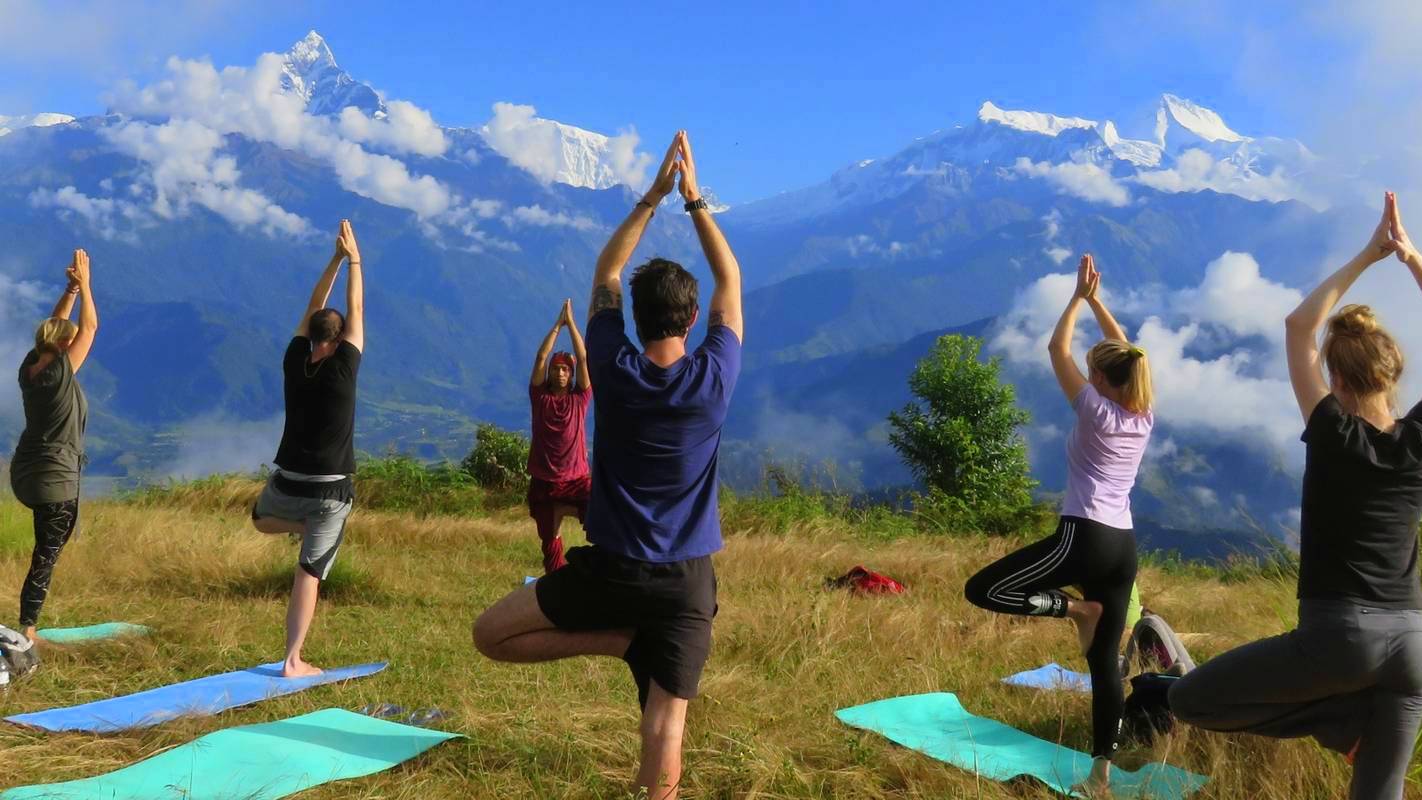
Nepal, with its serene landscapes and ancient spiritual heritage, is an ideal destination for those seeking tranquility and inner peace. Yoga and meditation retreats in this Himalayan nation offer a perfect blend of natural beauty and spiritual practices, providing a retreat from the hustle and bustle of modern life.
Key Locations for Yoga and Meditation Retreats:
-
Pokhara: Known for its stunning natural beauty, Pokhara is a favored spot for yoga and meditation. The tranquil environment, with views of the Annapurna range reflecting off the serene Phewa Lake, helps practitioners to reconnect with nature while deepening their spiritual practice.
-
Kathmandu Valley: Despite being the capital city, Kathmandu offers several peaceful retreat centers on its outskirts, providing a spiritual oasis amid the urban setting. These centers often combine yoga with Buddhist meditation practices.
-
Lumbini: As the birthplace of Buddha, Lumbini carries a profound spiritual significance. Yoga and meditation centers here allow practitioners to explore Buddhist teachings and meditation techniques in a deeply historical context.
Types of Retreats Offered:
- Detox Retreats: Combining yoga sessions with detox diets and spa treatments to cleanse the body and mind.
- Silent Meditation Retreats: Focusing on Vipassana meditation, these retreats encourage introspection and self-awareness through silence.
- Yoga Teacher Training: For those who wish to deepen their practice or become yoga instructors, these intensive courses offer in-depth training in various styles of yoga.
What to Expect:
- Expert Guidance: Retreats are typically led by experienced instructors who guide participants through yoga asanas, meditation techniques, and breathing exercises (pranayama).
- Holistic Wellness: Many retreats also include holistic therapies like Ayurveda, Reiki, and massage, promoting overall well-being.
- Community Living: Staying in a retreat center often involves community living, which can include shared accommodations and meals. This fosters a sense of community and mutual support among participants.
Benefits of Attending a Retreat:
- Mental Clarity and Stress Reduction: The combination of meditation, yoga, and a serene environment helps to reduce stress and promote mental clarity.
- Physical Health: Regular yoga practice enhances flexibility, strength, and overall health.
- Spiritual Growth: Immersive experiences in these spiritual settings can lead to profound personal and spiritual growth.
Tips for Choosing a Retreat:
- Define Your Intentions: Consider what you hope to achieve from the retreat, whether it’s relaxation, spiritual insight, or physical health.
- Research the Instructors: Look into the backgrounds and qualifications of the instructors to ensure they meet your expectations.
- Check Reviews: Reading experiences of past participants can provide valuable insights into what to expect from the retreat.
Why Choose Nepal for Yoga and Meditation?
Nepal’s yoga and meditation retreats are more than just places to practice; they are gateways to exploring ancient spiritual traditions in a land that is steeped in religious heritage. The natural calm of the Himalayas adds an unparalleled depth to the practice of yoga and meditation, making Nepal a top destination for those looking to enrich their spiritual journey. Whether nestled in lush greenery or perched on hilltops offering panoramic views, these retreats provide a sanctuary where body, mind, and spirit can flourish.
As you plan your journey through Nepal, embracing the array of unmissable experiences from the majestic peaks of the Himalayas to the vibrant streets of Kathmandu, remember that each adventure, each cultural encounter, and each moment of tranquility in nature's embrace contributes to a deeper understanding of this magnificent country. Whether you're trekking to Everest Base Camp, participating in lively festivals, or simply soaking in the spiritual aura of ancient temples, Nepal offers a unique tapestry of experiences that cater to adventurers, culture seekers, and spiritual wanderers alike. So pack your spirit of adventure and prepare for an unforgettable journey that will enrich your soul and leave you with memories to cherish for a lifetime.
FAQs of the Nepal Bucket List: Unmissable Experiences
Q: What is the best time of year to visit Nepal for trekking?
A: The best times for trekking in Nepal are during the pre-monsoon season (March to May) and the post-monsoon season (October to November). These months offer stable weather conditions, clear skies, and the best mountain visibility.
Q: Do I need a visa to visit Nepal?
A: Most foreign nationals require a visa to enter Nepal. Visas can be obtained on arrival at the airport in Kathmandu or at land border crossings, or in advance from Nepalese diplomatic missions abroad. Ensure your passport has at least six months of validity.
Q: How can I prepare for high-altitude trekking?
A: To prepare for high-altitude trekking, focus on cardiovascular fitness, strength training, and hiking practice. It’s also recommended to arrive in Nepal a few days early to acclimatize and to take it slow during the trek to adjust to the altitude.
Q: What should I pack for a trek in the Himalayas?
A: Essential items for Himalayan trekking include high-quality hiking boots, layered clothing, a waterproof jacket, a sleeping bag suitable for cold temperatures, a first-aid kit, a headlamp, and a reusable water bottle. Don’t forget sun protection and personal medications.
Q: Are there any cultural norms or etiquette I should be aware of?
A: Nepalese culture is welcoming but conservative. Dress modestly, especially when visiting temples and rural areas. Always remove your shoes before entering someone's home or a place of worship. It is polite to greet people with “Namaste” and to use your right hand for eating and giving or receiving items.
Q: Is it safe to travel in Nepal?
A: Nepal is generally safe for travelers. However, it’s important to take standard safety precautions, avoid walking alone at night, secure your belongings, and stay informed about the local conditions, especially during the monsoon season or in remote areas.
Q: What are the options for accommodation in Nepal?
A: Nepal offers a range of accommodation options from luxury hotels and resorts in major cities and tourist areas to teahouses and lodges on trekking routes. Booking in advance is recommended, especially during peak tourism seasons.
Q: Can I participate in local festivals during my visit?
A: Yes, Nepal’s festivals are open to everyone, and participating can be a highlight of your visit. However, it’s important to respect local traditions and follow any specific guidelines or etiquette during these cultural events.

